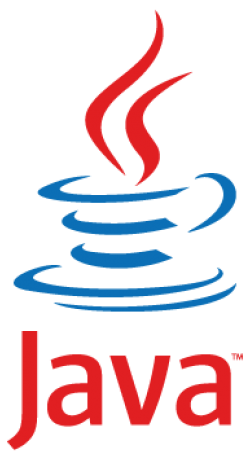
Java is a general-purpose computer programming language that is concurrent, class-based, object-oriented, and specifically designed to have as few implementation dependencies as possible. It is intended to let application developers "write once, run anywhere" (WORA), meaning that compiled Java code can run on all platforms that support Java without the need for recompilation. Java applications are typically compiled to bytecode that can run on any Java virtual machine (JVM) regardless of computer architecture. As of 2015, Java is one of the most popular programming languages in use, particularly for client-server web applications, with a reported 9 million developers. Java was originally developed by James Gosling at Sun Microsystems (which has since been acquired by Oracle Corporation) and released in 1995 as a core component of Sun Microsystems' Java platform. The language derives much of its syntax from C and C++, but it has fewer low-level facilities than either of them.
The original and reference implementation Java compilers, virtual machines, and class libraries were originally released by Sun under proprietary licences. As of May 2007, in compliance with the specifications of the Java Community Process, Sun relicensed most of its Java technologies under the GNU General Public License. Others have also developed alternative implementations of these Sun technologies, such as the GNU Compiler for Java (bytecode compiler), GNU Classpath (standard libraries), and IcedTea-Web (browser plugin for applets).
The latest version is Java 8, which is the only version currently supported for free by Oracle, although earlier versions are supported both by Oracle and other companies on a commercial basis.
History
James Gosling, Mike Sheridan, and Patrick Naughton initiated the Java language project in June 1991. Java was originally designed for interactive television, but it was too advanced for the digital cable television industry at the time. The language was initially called Oak after an oak tree that stood outside Gosling's office. Later the project went by the name Green and was finally renamed Java, from Java coffee. Gosling designed Java with a C/C++-style syntax that system and application programmers would find familiar.
Sun Microsystems released the first public implementation as Java 1.0 in 1995. It promised "Write Once, Run Anywhere" (WORA), providing no-cost run-times on popular platforms. Fairly secure and featuring configurable security, it allowed network- and file-access restrictions. Major web browsers soon incorporated the ability to run Java applets within web pages, and Java quickly became popular. The Java 1.0 compiler was re-written in Java by Arthur van Hoff to comply strictly with the Java 1.0 language specification. With the advent of Java 2 (released initially as J2SE 1.2 in December 1998 – 1999), new versions had multiple configurations built for different types of platforms. J2EE included technologies and APIs for enterprise applications typically run in server environments, while J2ME featured APIs optimized for mobile applications. The desktop version was renamed J2SE. In 2006, for marketing purposes, Sun renamed new J2 versions as Java EE, Java ME, and Java SE, respectively.
In 1997, Sun Microsystems approached the ISO/IEC JTC 1 standards body and later the Ecma International to formalize Java, but it soon withdrew from the process. Java remains a de facto standard, controlled through the Java Community Process. At one time, Sun made most of its Java implementations available without charge, despite their proprietary software status. Sun generated revenue from Java through the selling of licenses for specialized products such as the Java Enterprise System.
On November 13, 2006, Sun released much of its Java virtual machine (JVM) as free and open-source software, (FOSS), under the terms of the GNU General Public License (GPL). On May 8, 2007, Sun finished the process, making all of its JVM's core code available under free software/open-source distribution terms, aside from a small portion of code to which Sun did not hold the copyright.
Sun's vice-president Rich Green said that Sun's ideal role with regard to Java was as an "evangelist". Following Oracle Corporation's acquisition of Sun Microsystems in 2009–10, Oracle has described itself as the "steward of Java technology with a relentless commitment to fostering a community of participation and transparency". This did not prevent Oracle from filing a lawsuit against Google shortly after that for using Java inside the Android SDK (see Google section below). Java software runs on everything from laptops to data centers, game consoles to scientific supercomputers. On April 2, 2010, James Gosling resigned from Oracle.
Principles
There were five primary goals in the creation of the Java language:
- It must be "simple, object-oriented, and familiar".
- It must be "robust and secure".
- It must be "architecture-neutral and portable".
- It must execute with "high performance".
- It must be "interpreted, threaded, and dynamic".

